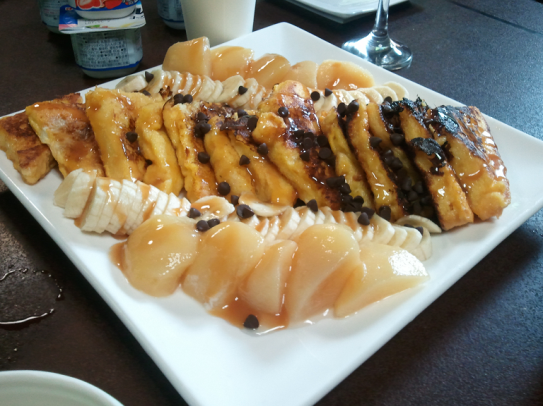TOMODACHI Summer 2012 BEYOND Tomorrow U.S. Program – Reconstruction and Planning – Orientation
2012.07.12
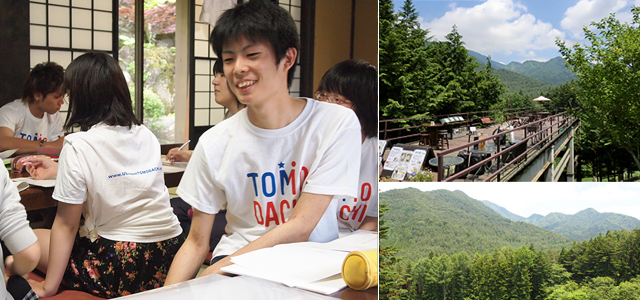
1. Summary
 The orientation for the TOMODACHI Summer 2012 BEYOND Tomorrow U.S. Program – Reconstruction and Planning – (U.S. Program) took place over a weekend at the foot of Mount Fuji. The forthcoming program in the U.S. will provide the students opportunities to draw the lessons from the U.S. experience of reconstruction following Hurricane Katrina and 9/11, and examine what could be applied for mid-/long-term Tohoku reconstruction process.
The orientation for the TOMODACHI Summer 2012 BEYOND Tomorrow U.S. Program – Reconstruction and Planning – (U.S. Program) took place over a weekend at the foot of Mount Fuji. The forthcoming program in the U.S. will provide the students opportunities to draw the lessons from the U.S. experience of reconstruction following Hurricane Katrina and 9/11, and examine what could be applied for mid-/long-term Tohoku reconstruction process.
2. Objectives
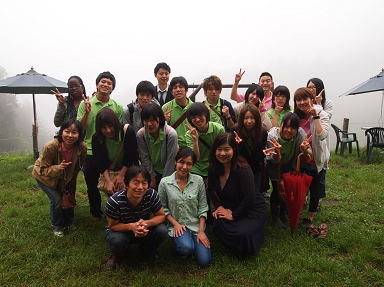 To deepen the students’ understanding of the September 11th terrorist attacks and Hurricane Katrina, learning the issues associated with subsequent reconstruction and urban planning.
To deepen the students’ understanding of the September 11th terrorist attacks and Hurricane Katrina, learning the issues associated with subsequent reconstruction and urban planning.- To summarize the issues concerning the reconstruction of Tohoku, and to discuss what they want to communicate in the U.S. as representatives of Tohoku
- To create a sense of team unity in preparation for the 2-week U.S. Program.
3. Date
Friday, June 29 – Sunday, July 1, 20124. Location
Shikitei (Fujiyoshida, Yamanashi Prefecture)5. Participants
Nine students participating in the 2012 U.S. Program and three students planning to study abroad through the BEYOND Tomorrow High School Study Abroad Program. A click of a photographs will display a profile.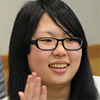 Minori Endo
At the Faculty of Business Administration at Ishinomaki Senshu University following graduation from Ishinomakikita High School
Minori lost her father and her house to the disaster, and though feeling deep despair she wanted for lots of people to be informed about the disaster, and took advantage of her experience as being the editor of a photography department to capture some of the images of the destruction left by the tsunami, sending them out through the media. As someone who experienced the disaster, Minori is motivated to communicate about the “now” of the disaster areas, and in the future she would like to engage in activities that enable her to continue to etch each moment of life into her heart without letting the current “now” get left behind in the past. Through the U.S. program, she would like to develop perspective on Tohoku reconstruction by examining post-disaster reconstructions and planning that took place outside Japan.
Minori Endo
At the Faculty of Business Administration at Ishinomaki Senshu University following graduation from Ishinomakikita High School
Minori lost her father and her house to the disaster, and though feeling deep despair she wanted for lots of people to be informed about the disaster, and took advantage of her experience as being the editor of a photography department to capture some of the images of the destruction left by the tsunami, sending them out through the media. As someone who experienced the disaster, Minori is motivated to communicate about the “now” of the disaster areas, and in the future she would like to engage in activities that enable her to continue to etch each moment of life into her heart without letting the current “now” get left behind in the past. Through the U.S. program, she would like to develop perspective on Tohoku reconstruction by examining post-disaster reconstructions and planning that took place outside Japan.
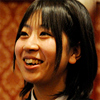 Ryoko Endo
At the Toryo High School. Enrolling the Saint. Michael’s College, U.K. from September 2012
Ryoko lost her home in Minami Sanriku to the tsunami and had to relocate to Senmaya, approximately 30 miles away. Having lost her ordinary life, hometown, and precious friends, she has decided to live life to its fullest without regrets. In September 2012, Ryoko will take on the new challenge to study in St. Michael’s College in the U.K. to improve her English abilities and communication skills. Her goal is to tell the world about the Great East Japan earthquake and tsunami as a survivor of the tragic event
Ryoko Endo
At the Toryo High School. Enrolling the Saint. Michael’s College, U.K. from September 2012
Ryoko lost her home in Minami Sanriku to the tsunami and had to relocate to Senmaya, approximately 30 miles away. Having lost her ordinary life, hometown, and precious friends, she has decided to live life to its fullest without regrets. In September 2012, Ryoko will take on the new challenge to study in St. Michael’s College in the U.K. to improve her English abilities and communication skills. Her goal is to tell the world about the Great East Japan earthquake and tsunami as a survivor of the tragic event
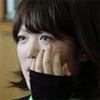 Sakae Onodera
At the School of Commerce at Waseda University following graduation from Sendai Ikuei Gakuen High School
As a result of the disaster Sakae lost her home in Kesennuma. Although the disaster was dreadful Sakae would like to be able to see it as a positive turning point in her own life, and believes that along with her peers who experienced the disaster they should explore things they can do to help, and take positive action in the world in the spirit of “social contribution”. In the future, her dream is to work for an international organization dealing with international development and nation building, as well as international business. During the visit in the U.S., She would like to learn how the U.S. overcame natural disasters and terrorisms, and made improvements in their communities.
Sakae Onodera
At the School of Commerce at Waseda University following graduation from Sendai Ikuei Gakuen High School
As a result of the disaster Sakae lost her home in Kesennuma. Although the disaster was dreadful Sakae would like to be able to see it as a positive turning point in her own life, and believes that along with her peers who experienced the disaster they should explore things they can do to help, and take positive action in the world in the spirit of “social contribution”. In the future, her dream is to work for an international organization dealing with international development and nation building, as well as international business. During the visit in the U.S., She would like to learn how the U.S. overcame natural disasters and terrorisms, and made improvements in their communities.
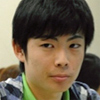 Tomohiro Kamisawa
At the Faculty of Agriculture at Tohoku University following graduation from Morioka First High School
Tomohiro decided to study agriculture, as “agriculture” applies not only to domestic issues in Japan but is important for determining the shape of assistance for solving global problems such as poverty. Rather than just keeping the experience of the disaster inside, Tomohiro would like to make big strides in his personal development along with his friends, while proactively engaging in communication. He hopes to become a person who can give hope to people living in the disaster areas. To this end, Tomohiro would like to study hard at university while participating in BEYOND Tomorrow programs and striving towards his dreams. The trip to the U.S., this time being his first time abroad, he would like to interact with victims of disasters draw lessons of supporting the vulnerable and replicate the learning for Tohoku and the world in the future.
Tomohiro Kamisawa
At the Faculty of Agriculture at Tohoku University following graduation from Morioka First High School
Tomohiro decided to study agriculture, as “agriculture” applies not only to domestic issues in Japan but is important for determining the shape of assistance for solving global problems such as poverty. Rather than just keeping the experience of the disaster inside, Tomohiro would like to make big strides in his personal development along with his friends, while proactively engaging in communication. He hopes to become a person who can give hope to people living in the disaster areas. To this end, Tomohiro would like to study hard at university while participating in BEYOND Tomorrow programs and striving towards his dreams. The trip to the U.S., this time being his first time abroad, he would like to interact with victims of disasters draw lessons of supporting the vulnerable and replicate the learning for Tohoku and the world in the future.
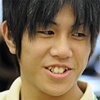 Masahiro Kikuchi
At the School of Social and International Studies at Tsukuba University following graduation from Takada High School
Masahiro lost both his parents in Rikuzentakata. At high school Masahiro demonstrated exceptional leadership as the president of the student council, and after the disaster visited the United Nations headquarters in Europe as part of the 14th High School Peace Ambassador. Masahiro realized the importance of international cooperation after the disaster, and he believes that that communicating the importance of disaster prevention to the rest of the world is a future mission for Japan. In the future, Masahiro would like to become the mayor of Rikuzentakata to lead the way for the recovery of the disaster areas. To address the tough financial situation for many people who lost their jobs, Masahiro wishes to contribute to the resolution of the employment problem. He decided to join the U.S. program to gain global perspectives on reconstruction and urban planning.
Masahiro Kikuchi
At the School of Social and International Studies at Tsukuba University following graduation from Takada High School
Masahiro lost both his parents in Rikuzentakata. At high school Masahiro demonstrated exceptional leadership as the president of the student council, and after the disaster visited the United Nations headquarters in Europe as part of the 14th High School Peace Ambassador. Masahiro realized the importance of international cooperation after the disaster, and he believes that that communicating the importance of disaster prevention to the rest of the world is a future mission for Japan. In the future, Masahiro would like to become the mayor of Rikuzentakata to lead the way for the recovery of the disaster areas. To address the tough financial situation for many people who lost their jobs, Masahiro wishes to contribute to the resolution of the employment problem. He decided to join the U.S. program to gain global perspectives on reconstruction and urban planning.
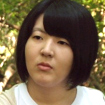 Anna Kumagai
At the Faculty of Project Design at Miyagi University following graduation from Izumi Tateyama High School
Anna was impressed by the local people’s spirits to help each other even in the midst of disaster. Wanting to give back to the local people, she joined a student organization called “East Japan Challenging & Chance” in which she attempts to help local communities with business. Through the BEYOND Tomorrow U.S. program, she would like to think about what she can do for Tohoku, and learn about successes and failures of the reconstruction activities in the U.S. She believes that the experience in the U.S. will provide her with a framework to plan reconstruction and urban development that are most appropriate for Tohoku.
Anna Kumagai
At the Faculty of Project Design at Miyagi University following graduation from Izumi Tateyama High School
Anna was impressed by the local people’s spirits to help each other even in the midst of disaster. Wanting to give back to the local people, she joined a student organization called “East Japan Challenging & Chance” in which she attempts to help local communities with business. Through the BEYOND Tomorrow U.S. program, she would like to think about what she can do for Tohoku, and learn about successes and failures of the reconstruction activities in the U.S. She believes that the experience in the U.S. will provide her with a framework to plan reconstruction and urban development that are most appropriate for Tohoku.
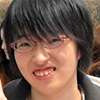 Ayaka Goto
At the Department of Childcare at Miyagi Seishin Junior College following graduation from Ishinomaki Commercial High School
Ayaka was in Ishinomaki when the earthquake and tsunami happened. Though her life was saved, she lost her house only 165 feet from the sea and many of her friends as a result of the tsunami. After the disaster, she had chances to experience homestay in Hawaii and Canada where she saw that the world still praying for Japan and her recovery from the devastation. In the future, she would like to engage in childcare in the developing world such as Africa, and also would like to communicate with people in those countries about the disaster and the importance of disaster prevention. In the U.S., she would like to learn about how the U.S. helped people’s psychological recovery as well as how the cities addressed physical reconstruction activities.
Ayaka Goto
At the Department of Childcare at Miyagi Seishin Junior College following graduation from Ishinomaki Commercial High School
Ayaka was in Ishinomaki when the earthquake and tsunami happened. Though her life was saved, she lost her house only 165 feet from the sea and many of her friends as a result of the tsunami. After the disaster, she had chances to experience homestay in Hawaii and Canada where she saw that the world still praying for Japan and her recovery from the devastation. In the future, she would like to engage in childcare in the developing world such as Africa, and also would like to communicate with people in those countries about the disaster and the importance of disaster prevention. In the U.S., she would like to learn about how the U.S. helped people’s psychological recovery as well as how the cities addressed physical reconstruction activities.
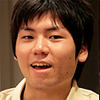 Tsubasa Sugeno
At the Faculty of International Studies at Utsunomiya University following graduation from Fukushima Technical High School
Tsubasa realized the importance of international cooperation after many countries provided support for Japan after the disaster, and decided that he would like to contribute to global society. In order to learn about how to forge a society in which people not just in Japan but from around the world who are suffering due to poverty and conflict can have a reassuring future, Tsubasa decided to study International Relations. While at university Tsubasa also hopes to study abroad, and broaden his horizons. As a victim of the disaster, he would also like to communicate with the rest of the world about the terror of natural disasters and the strength of Tohoku. Through the U.S. program, he would like to take the first step to become an international leader with a creative approach to reconstruction effort and appreciation for diversity.
Tsubasa Sugeno
At the Faculty of International Studies at Utsunomiya University following graduation from Fukushima Technical High School
Tsubasa realized the importance of international cooperation after many countries provided support for Japan after the disaster, and decided that he would like to contribute to global society. In order to learn about how to forge a society in which people not just in Japan but from around the world who are suffering due to poverty and conflict can have a reassuring future, Tsubasa decided to study International Relations. While at university Tsubasa also hopes to study abroad, and broaden his horizons. As a victim of the disaster, he would also like to communicate with the rest of the world about the terror of natural disasters and the strength of Tohoku. Through the U.S. program, he would like to take the first step to become an international leader with a creative approach to reconstruction effort and appreciation for diversity.
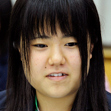 Nanami Takahashi
At the Miyagi Daiichi High School. Enrolling a high school in France from September 2012
Although following the disaster Nanami felt despondent and like she couldn’t face the following day, she also feels that the disaster taught her important things in life that she hadn’t given much thought to previously. Following the disaster she visited Minsk in the Republic of Belarus as a representative of Tohoku, and talked about the disaster with the town mayor and local high school students. For the 2011 academic year, Nanami will study in high school in France on AFS exchange program.
Nanami Takahashi
At the Miyagi Daiichi High School. Enrolling a high school in France from September 2012
Although following the disaster Nanami felt despondent and like she couldn’t face the following day, she also feels that the disaster taught her important things in life that she hadn’t given much thought to previously. Following the disaster she visited Minsk in the Republic of Belarus as a representative of Tohoku, and talked about the disaster with the town mayor and local high school students. For the 2011 academic year, Nanami will study in high school in France on AFS exchange program.
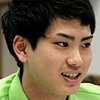 Masahide Chiba
At the Faculty of Engineering at Utsunomiya University following graduation from Ofunato High School
Masahide was in Ofunato when the disaster struck. As a result of the tsunami, he lost his mother, grandmother and home, and is now living in rented accommodation with his father and two younger brothers. Masahide believes that it is his mission to plan towns that are safe from natural disasters and contribute to the future recovery because he survived the devastating disaster when so many lives were lost. Masahide would like to set up a company that carries out projects related with the disaster recovery, and would like to participate in the planning of towns along the Sanriku Coast which are resilient to damage from natural disasters. During the visit to the U.S., he would like examine how the disaster communities in the U.S. recovered from devastation.
Masahide Chiba
At the Faculty of Engineering at Utsunomiya University following graduation from Ofunato High School
Masahide was in Ofunato when the disaster struck. As a result of the tsunami, he lost his mother, grandmother and home, and is now living in rented accommodation with his father and two younger brothers. Masahide believes that it is his mission to plan towns that are safe from natural disasters and contribute to the future recovery because he survived the devastating disaster when so many lives were lost. Masahide would like to set up a company that carries out projects related with the disaster recovery, and would like to participate in the planning of towns along the Sanriku Coast which are resilient to damage from natural disasters. During the visit to the U.S., he would like examine how the disaster communities in the U.S. recovered from devastation.
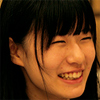 Miki Mashiko
At the Koriyama High School. Enrolling a high school in Switzerland from July, 2012.
Miki personally experienced the Earthquake in Koriyama City. After that, she experienced prejudice based on rumors regarding radioactivity in Fukushima, and wants to spread the message of the real state of affairs in the area to people around the country. In the future, she believes getting people to understand and support Tohoku is important to revitalizing the region. She plans to study abroad at a Swiss High School for one year starting in July.
Miki Mashiko
At the Koriyama High School. Enrolling a high school in Switzerland from July, 2012.
Miki personally experienced the Earthquake in Koriyama City. After that, she experienced prejudice based on rumors regarding radioactivity in Fukushima, and wants to spread the message of the real state of affairs in the area to people around the country. In the future, she believes getting people to understand and support Tohoku is important to revitalizing the region. She plans to study abroad at a Swiss High School for one year starting in July.
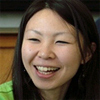 Hiromi Meguro
At the Faculty of Community Service at Tohoku University of Community Service and Science following graduation from Soma Higashi High School
Hiromi was given a lift in the car of a passing stranger while running for her life from the rapidly encroaching tsunami, and it is thanks to this that she barely managed to escape unharmed. Her house was however destroyed, and her father lost his job. Having given up on her dream of attending a university specializing in music and having also considered going straight into employment, eventually Hiromi decided on a new goal of using this scholarship to go on to study town planning and local revitalization in order to contribute to the resources for Tohoku’s recovery. During the stay in the U.S., she would like to learn how the multi-cultural country has integrated diverse population upon reconstruction and urban planning.
Hiromi Meguro
At the Faculty of Community Service at Tohoku University of Community Service and Science following graduation from Soma Higashi High School
Hiromi was given a lift in the car of a passing stranger while running for her life from the rapidly encroaching tsunami, and it is thanks to this that she barely managed to escape unharmed. Her house was however destroyed, and her father lost his job. Having given up on her dream of attending a university specializing in music and having also considered going straight into employment, eventually Hiromi decided on a new goal of using this scholarship to go on to study town planning and local revitalization in order to contribute to the resources for Tohoku’s recovery. During the stay in the U.S., she would like to learn how the multi-cultural country has integrated diverse population upon reconstruction and urban planning.
6. Speakers and guests
A variety of workshops were conducted by experts in reconstruction planning and study-abroad activities, offering advice to the students in preparation for the U.S. program and High School Study Abroad Programs.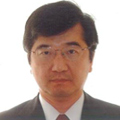 Satoru Nishikawa
Director of Land and Real Property Market Division, Ministry of Land, Infrastructure, Transport and Tourism
Satoru Nishikawa
Director of Land and Real Property Market Division, Ministry of Land, Infrastructure, Transport and Tourism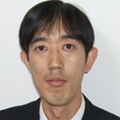 Masatomo Miyazawa
Public-Private Initiative Policy Division, Ministry of Land, Infrastructure, Transport and Tourism
Masatomo Miyazawa
Public-Private Initiative Policy Division, Ministry of Land, Infrastructure, Transport and Tourism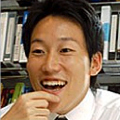 Eiji Yokoyama
Senior Consultant
Educational Information, Consulting & Mentoring
Eiji Yokoyama
Senior Consultant
Educational Information, Consulting & Mentoring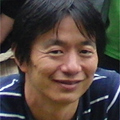 Taichi Fujita
Owner, Shikitei
Vice President, Fujisan Farm
Taichi Fujita
Owner, Shikitei
Vice President, Fujisan Farm7. Program Summary
- Friday, June 29
-
- Orientation 1: Program Outline
- Orientation 2: Icebreaking
- Workshop 1: U.S.-Japan Cooperation in the context of Disaster Reconstruction
- Workshop 2: The 3/11 Earthquake, Myself, and BEYOND Tomorrow
- Saturday, June 30
-
- Nature walk
- Workshop 3: Hurricane Katrina and the September 11th Terrorist Attacks
- Workshop 4: Reconstruction and Planning of the Ideal City: Part 1 (Speaker: Masatomo Miyazawa)
- Workshop 5: Disaster Response in the World” (Speaker: Satoru Nishikawa)
- Workshop 6: Reconstruction and Planning of the Ideal City: Part 2 (Drafting a presentation of what we want to learn in the U.S. about reconstruction)
- Barbeque
- BEYOND Tomorrow Game tournament
- Sunday, July 1
-
- Breakfast with the owner of Shikitei (Speaker: Taichi Fujita)
- Group Work 1: Three things we want to convey from Tohoku to the U.S. (Drafting team presentations in English)
- Cow milking experience
8. Key Learning
The program focused on three themes: 1. Reconstruction and City Planning, 2. The situation in Tohoku that we want to convey in the U.S., 3. Reflection on the Disaster Experience1. Reconstruction and City Planning
Workshop1: U.S.-Japan Cooperation in the Context of Disaster Reconstruction
– Why going to America as representatives of Tohoku? Why Japan-U.S. cooperation in the reconstruction of Tohoku? What is the TOMODACHI Initiative?Workshop 3: Hurricane Katrina and the September 11th Terrorist Attacks
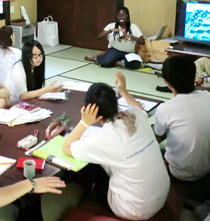 What was 9/11? What was Hurricane Katrina? Gaining a deeper understanding of post-disaster policies and initiatives
What was 9/11? What was Hurricane Katrina? Gaining a deeper understanding of post-disaster policies and initiatives
“In America, regardless of skin color or appearance, everyone is considered an American.” “Issues like poverty, violence, infrastructure, racial problems, oil prices, population drain are all related with ‘reconstruction’ and ‘city planning.’ ” “What were countermeasures only possible in the U.S.?”
Workshop4&6: Reconstruction and City Planning
In groups, students categorized the issues associated with mid-term Tohoku reconstruction based on their own experiences, and discussed their vision for the “ideal city”.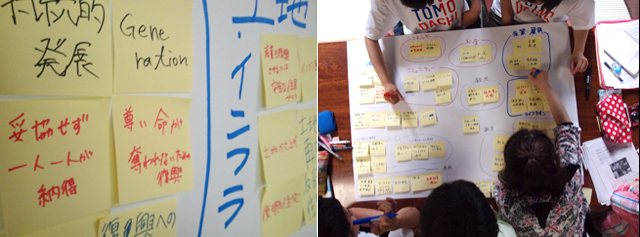
Team A “A safe, secure, and stable city”
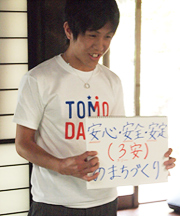 ■ Issues
Rebuilding the land damaged by the tsunami, infrastructure development, employment, revitalization of local businesses, public-private partnerships, human relationships within the community, etc.
■ Ideal City Planning
“A safe, secure, and stable city”: We aim to create a city that is resilient to natural disasters, where people can feel safe and secure. Also, since we believe that just feeling safe and secure in a city is not enough for the city to grow further, we want to create a city that is socially and economically stable so that it can develop dynamically.
■ Issues
Rebuilding the land damaged by the tsunami, infrastructure development, employment, revitalization of local businesses, public-private partnerships, human relationships within the community, etc.
■ Ideal City Planning
“A safe, secure, and stable city”: We aim to create a city that is resilient to natural disasters, where people can feel safe and secure. Also, since we believe that just feeling safe and secure in a city is not enough for the city to grow further, we want to create a city that is socially and economically stable so that it can develop dynamically.
 ■ Issues
Rebuilding the land damaged by the tsunami, infrastructure development, employment, revitalization of local businesses, public-private partnerships, human relationships within the community, etc.
■ Ideal City Planning
“A safe, secure, and stable city”: We aim to create a city that is resilient to natural disasters, where people can feel safe and secure. Also, since we believe that just feeling safe and secure in a city is not enough for the city to grow further, we want to create a city that is socially and economically stable so that it can develop dynamically.
■ Issues
Rebuilding the land damaged by the tsunami, infrastructure development, employment, revitalization of local businesses, public-private partnerships, human relationships within the community, etc.
■ Ideal City Planning
“A safe, secure, and stable city”: We aim to create a city that is resilient to natural disasters, where people can feel safe and secure. Also, since we believe that just feeling safe and secure in a city is not enough for the city to grow further, we want to create a city that is socially and economically stable so that it can develop dynamically.
Team B “A city that will make people want to return to”
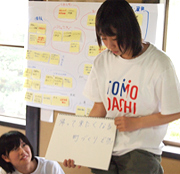 ■ Issues
Post-disaster population decrease, population outflow of young people to outside the region, decrease in tourists, etc.
■ The city we want to create
“A city that will make people want to return to”: We want to create a city where things like jobs, medical care, and education are firmly implemented, making people from Tohoku (especially young people) want to return home. Also, in order to bring back the tourists who have stayed away due to the nuclear accident, we want to create a city that makes Tohoku more attractive.
■ Issues
Post-disaster population decrease, population outflow of young people to outside the region, decrease in tourists, etc.
■ The city we want to create
“A city that will make people want to return to”: We want to create a city where things like jobs, medical care, and education are firmly implemented, making people from Tohoku (especially young people) want to return home. Also, in order to bring back the tourists who have stayed away due to the nuclear accident, we want to create a city that makes Tohoku more attractive.
 ■ Issues
Post-disaster population decrease, population outflow of young people to outside the region, decrease in tourists, etc.
■ The city we want to create
“A city that will make people want to return to”: We want to create a city where things like jobs, medical care, and education are firmly implemented, making people from Tohoku (especially young people) want to return home. Also, in order to bring back the tourists who have stayed away due to the nuclear accident, we want to create a city that makes Tohoku more attractive.
■ Issues
Post-disaster population decrease, population outflow of young people to outside the region, decrease in tourists, etc.
■ The city we want to create
“A city that will make people want to return to”: We want to create a city where things like jobs, medical care, and education are firmly implemented, making people from Tohoku (especially young people) want to return home. Also, in order to bring back the tourists who have stayed away due to the nuclear accident, we want to create a city that makes Tohoku more attractive.
Workshop 5: Disaster Relief Efforts in the World
Pre-reading:- The Joint Field Office (JFO)’s reaction to Katrina
- Post-disaster reconstruction planning processes –a comparison of the planning processes of Kobe and New Orleans-
- Lessons learned from the response to Hurricane Katrina and resource mobilization for disaster response
- Moving to higher ground, donating to the proposed site (Asahi Shimbun January 11, 2012)”
2. The situation in Tohoku that we want to convey to the U.S.
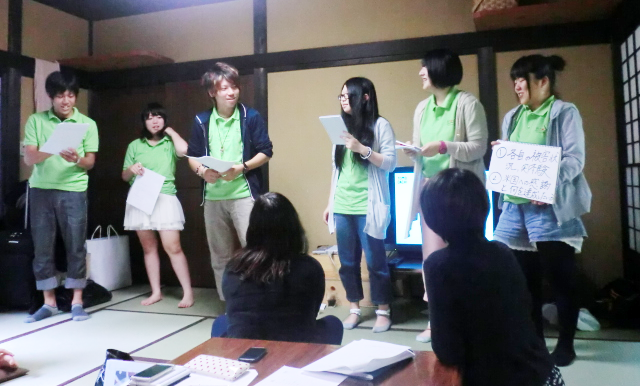 Group work 2: Three things we want to convey from Tohoku to the U.S.
Group work 2: Three things we want to convey from Tohoku to the U.S.
In groups, the students developed presentations on what they would like to convey to American people from Tohoku in English.
「We are the team of BEYOND Tomorrow. We would like to tell our stories of the 3.11 earthquake and tsunami」 「We will show our gratitude to American people for their support after the disaster」
「We would like to tell American people about the current situation in Tohoku after one year since the disaster」 「We would like to show that Tohoku, our hometown, is one of the most beautiful places in Japan」
3. Facing the Disaster Experience
Workshop 2: The 3/11 Earthquake, Me, and BEYOND Tomorrow
 After experiencing the Great East Japan Earthquake, why did I get involved with BEYOND Tomorrow? What was my most special moment after meeting people from BEYOND Tomorrow? One year after the Great East Japan Earthquake, the participating students reflected on their experiences once again.
After experiencing the Great East Japan Earthquake, why did I get involved with BEYOND Tomorrow? What was my most special moment after meeting people from BEYOND Tomorrow? One year after the Great East Japan Earthquake, the participating students reflected on their experiences once again.
“If there wasn’t BEYOND Tomorrow, I would have focused on trying to forget about the earthquake and I would not have been able to reflect on it and think about what would need to happen in the future” “When I met the people from BEYOND Tomorrow, I felt that I could air out my emotions here. It was the moment that I found precious people who I could consider as my dearest friends.”
“I lost a lot from the earthquake, but since I had entrance examinations for the university at the time, I tried not to think too much about it. But the time I couldn’t sort out my feelings, I met BEYOND Tomorrow.” “I lost my house and my parents lost their jobs in the earthquake. It was when I had to give up my dreams for the future that I met my friends and found a new role for myself. Now, I can walk towards the future, facing my new dreams.”
Supporters
 U.S.-Japan Council
U.S.-Japan Council Japan Disaster Relief Fund Boston
Japan Disaster Relief Fund Boston KPMG Japan
KPMG JapanCooperating organizations
The orientation for the U.S. Program was carried out due to the cooperation of many people. We are truly grateful for their support. (Management Cooperation) We thank the three staff members from POINT INC. who served as volunteers. (Venue Cooperation) We are grateful to Shikitei for providing the venue as well as accommodation.We appreciate the generosity of the following local farmers, from whom we received fruits, vegetables, and eggs.
Sumito Osawa, Osawa Nouen (Yamanashi-City)
Tatsuya Tanabe, Tamagoya (Oshino-mura)
Satoshi Takeno (Fuefuki-City)
Yuko Kutsuma (Fuefuki-City)
【Based on what they have learned during this orientation, the students will set off for the U.S. Program, to take place from August 6-22, 2012.】

